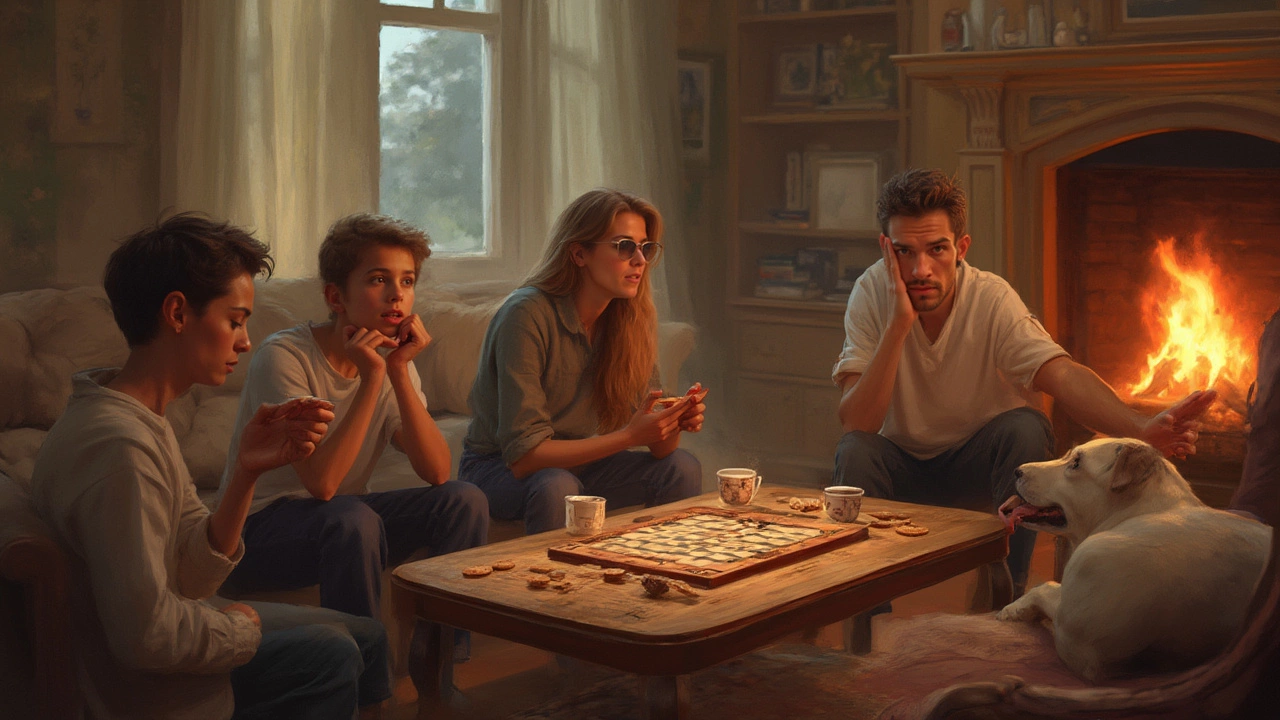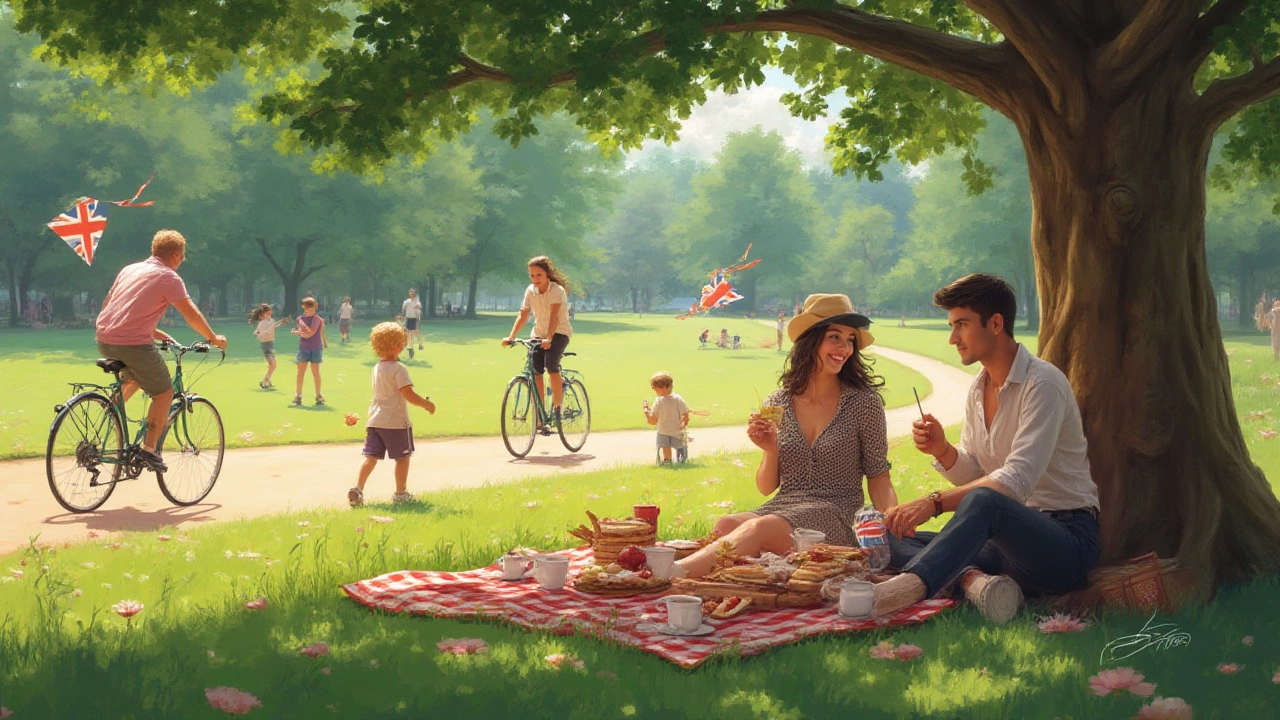Think about the last time you really let loose—no pressure, no deadlines, nobody breathing down your neck. Just your time, your vibe, your pick of what makes you tick. That’s the true spirit of recreational activities. You don’t need a fat bank account or Instagram-worthy views. You just need to know where—and how—to look. Funny thing is, most people don’t realise their ‘fun’ falls into one of four neat boxes. And that tiny bit of knowledge? It might just transform your weekends, your evenings, your sanity. So, what are these mysterious four types? Let’s get into the real-life details, honest perks, and tricks to make every moment count.
Physical Recreational Activities: Move, Sweat, Repeat
The stereotype is true—nobody’s going to the gym just for the fluorescent lighting. Physical recreational activities are all about moving your body, but it doesn’t have to mean grunting under a barbell or slogging through a half-marathon at sunrise. It’s about joy more than grind. Classic examples are swimming in the local pool, cycling along the Yarra River, kicking the footy in a local park, or just walking the dog as the sun comes up. Pickleball, by the way, is exploding in popularity in Melbourne, with new courts popping up from Croydon to St Kilda. Ever tried indoor rock-climbing? You’d be surprised how addictive it gets and how quickly your arms feel like spaghetti.
If crunches and sprints aren’t your cup of tea, nobody says you can’t dance your way to feeling good. Those salsa nights in Fitzroy, or bush dancing out in country Victoria, get your heart pumping and your endorphins firing—no gym membership required. Bowling, trampolining, skateboarding, even Tai Chi in the park—if you’re moving, you’re in the club.
And here’s a wild fact: According to the Australian Bureau of Statistics, over 60% of Australians participate in at least one form of physical recreation each week. It’s not just about getting fit; studies have found people who regularly move are less stressed and sleep better. Think about reaping those rewards from picking up your old tennis racquet or giving stand-up paddleboarding a shot on the Yarra.
If you’re looking to get started (or back into it) and want to keep the costs down, check your council for free community classes or pop-up events. Plenty of local neighbourhood houses offer trial sessions—from Zumba to gentle yoga—without long-term commitments.
Table: Most Popular Physical Recreational Activities (Melbourne, 2024)
| Activity | Estimated Participants | Fun Fact |
|---|---|---|
| Swimming | 185,000 | Many pools now offer floating yoga classes |
| Walking | 320,000 | Melbourne has 260+ signed walking tracks |
| Cycling | 120,000 | Most bike trails double as wildlife corridors |
| Dancing | 95,000 | City Square hosts public dance nights monthly |
Social Recreational Activities: Connection Over Competition
Ever gone fishing with a mate and talked more rubbish than actually catching fish? Or spent half a Sunday around a backyard BBQ, swapping stories and recipes more than worrying about the game on the telly? That’s social recreation in action. It’s all about spending time with others, getting that sense of belonging, and building memories that outlast the events themselves.
Social recreation doesn’t need a grand occasion. Board game nights at home, trivia pub nights, coffee catch-ups on Degraves Street, or heading to the footy with your mates—these are the glue that stick weeks together. Loneliness can sneak up on anyone, and social recreation quietly shoves it back out the door. Australia’s Royal Commission into Mental Health recently pointed out that regular social activity—even just a fortnightly dinner with friends—can cut the risk of depression by nearly 17%.
Melbourne does social like nowhere else. Pop into Queen Victoria Market and chat with stall owners, join a local soccer league no matter your skill level, or test your movie knowledge in an open-air cinema quiz. If you live solo or are new to a suburb, Meetup and Facebook local groups have exploded since 2022, making it easier than ever to connect with like-minded people for every hobby from wine tasting to learning photography.
And if you’re thinking ‘But I’m not extroverted or super social,’ there’s space for you too. Gardening clubs, origami workshops, and even silent reading parties have become a real thing around the city. You can be social without feeling “on display.”
Table: Common Social Recreational Activities in Australia
| Activity | Typical Group Size | Best Time for Participation |
|---|---|---|
| Barbecues | 6–15 | Summer weekends |
| Trivia Nights | 4–8 | Weekday evenings |
| Book Clubs | 5–12 | Monthly, evenings |
| Community Festivals | 100+ | Seasonal, weekends |
If you want to nudge yourself into more social recreation, set aside one night a week for something simple—cook a meal together, learn a card game, or visit a new local spot. Don’t force big commitments. The little connections are often the ones that stick.

Creative and Intellectual Recreational Activities: Feed Your Mind and Soul
For some, the fun in free time doesn’t come from a sweat or a group gathering, but from getting the mind humming or the hands working on something meaningful. Creative and intellectual recreational activities are like a battery recharge for the brain. You don’t need to be Picasso, Shakespeare, or Einstein either—just a curious spark.
Painting, sketching, photography, knitting, writing a blog, learning a new language, quilting, restoring furniture, or fiddling with music software—these count as creative recreation. Meanwhile, crossword puzzles, Sudoku, escape rooms, chess, and even watching documentaries at ACMI or through streaming platforms are your ticket to the intellectual zone. Not so long ago, a survey by Swinburne University showed that Melbournians who had a creative hobby reported being 22% happier. Not a fluke—they credit the little dopamine buzz from ‘making’ over just ‘consuming’.
Gardening is another standout. Digging in the dirt, propagating cuttings, designing a pot plant display in tight apartment spaces—it all gives a sense of progress and personal touch. It’s no coincidence plant nurseries are full of twenty-somethings and retirees alike on a Saturday morning.
Interesting fact: The local libraries in Melbourne have gone beyond book lending. You can borrow sewing machines, ukuleles, even 3D printers. And heaps of stores now offer pay-by-the-hour access to pottery wheels or woodturning equipment—no need to invest a fortune or clear out your garage.
Want a little challenge? Try the following:
- Dedicate 10 minutes a day to doodling—no filters, no judgment.
- Join a free online masterclass—plenty are short, practical, and beginner-friendly.
- Start a mini writing project—could be a handwritten letter, a travel diary, or a silly poem about your neighbours’ cat.
Keep it simple. The idea is to try new things without the pressure to succeed or show off.
Table: Easy Creative Hobbies with Low Startup Cost
| Hobby | Approximate Cost to Start | Best for |
|---|---|---|
| Sketching | $10 (pencils and pad) | People who get bored easily |
| Knitting | $15 (yarn and needles) | Fidgety hands, patience builders |
| Blog Writing | Free | Storytellers, ranters, list-makers |
| DIY Crafts | $20 (basic materials) | Experimenters, upcyclers |
This type of recreation is your antidote to digital overload. Just pick something, play, and let your mind wander. No wrong answers.
Outdoor and Nature-Based Recreational Activities: Green, Gritty, and Good for You
You can’t fake the way your shoulders drop or your brain clears after an hour outdoors. Outdoor and nature-based recreational activities are where you’ll find the heart-pumping stuff—hiking, camping, kayaking—but also the peaceful thrill of just being surrounded by green. People who spend at least two hours a week in nature (yep, that’s it) report higher mental well-being, according to a 2023 Deakin University survey.
In Melbourne, we’re spoilt for choice. There’s the Royal Botanic Gardens if you want a calm stroll, or you can hit the Dandenong Ranges for a proper sweat. Surfing at Torquay, walking the 1,000 Steps Trail at Ferntree Gully, or a picnic on Albert Park Lake—each counts. Even simple things like cloud-watching, foraging for wild herbs, or building sand castles at St Kilda Beach boost mood way more than you’d expect.
Outdoor recreation doesn’t have to be high-octane. Birdwatching, gardening, geocaching (it’s like a real-world treasure hunt with GPS), or planting trees with community groups all fall under this banner. If you want to add a sparkle to your afternoons, try visiting a new suburban park each weekend—Melbourne has over 480 public parks!
Table: Quick Guide to Outdoor Activities Around Melbourne
| Activity | Location | Best Season |
|---|---|---|
| Kayaking | Yarra River | Spring–Autumn |
| Botanic Gardens Stroll | Melbourne CBD | Year-Round |
| Rock Climbing | Grampians | Autumn |
| Surfing | Torquay Beach | Summer–Autumn |
If you’re unsure how to start, check out council-run programs like free guided ‘Parkrun’ events. Or just grab a hat, call a mate, and head to the nearest patch of grass with a frisbee. Outdoor activity isn’t about chasing adrenaline; it’s about dipping out of routine and soaking up sunshine—or bracing, fresh rain.
If you’re reading this and feeling like your life’s become too small, too inside, or too much of the same, try mixing in a few different types of recreational activities each month. Sprinkle in some social moments, a creative burst, a dose of greenery, and something to get your body moving. Fun isn’t a luxury for the rich or the rare. It’s a choice—and it’s yours.
Recreational activities do more than fight boredom. They give life texture and meaning. Next time you find yourself scrolling aimlessly, ask: what kind of recreation do I need right now? And then chase it down—Melbourne style.

